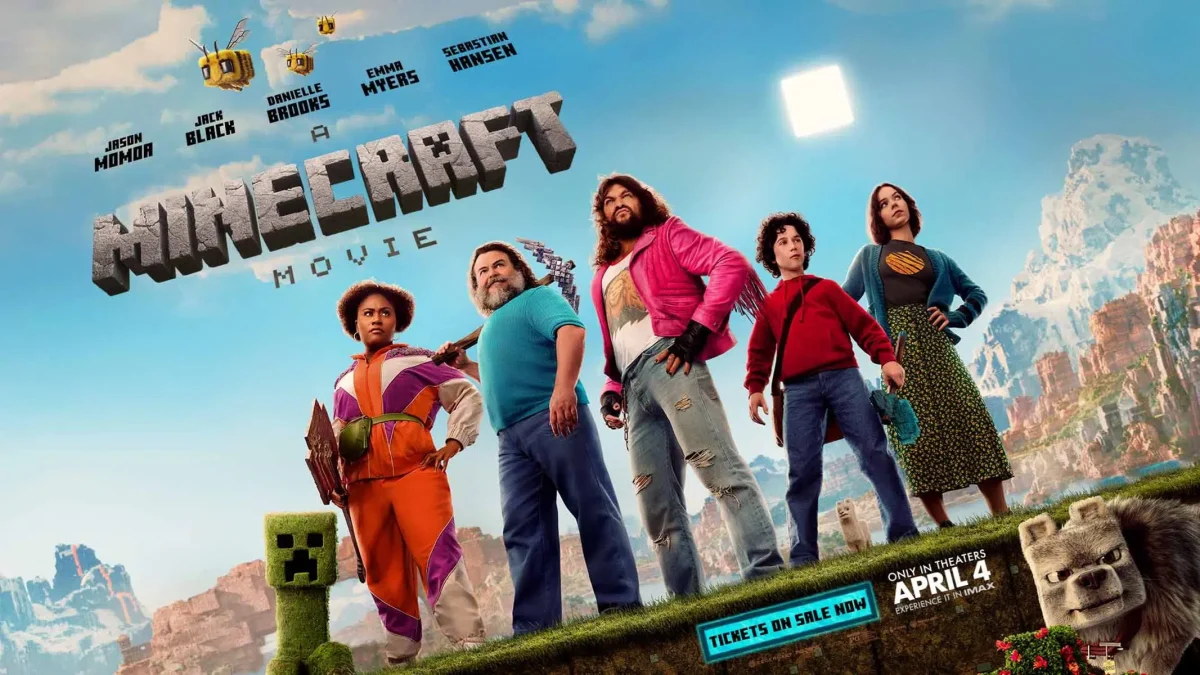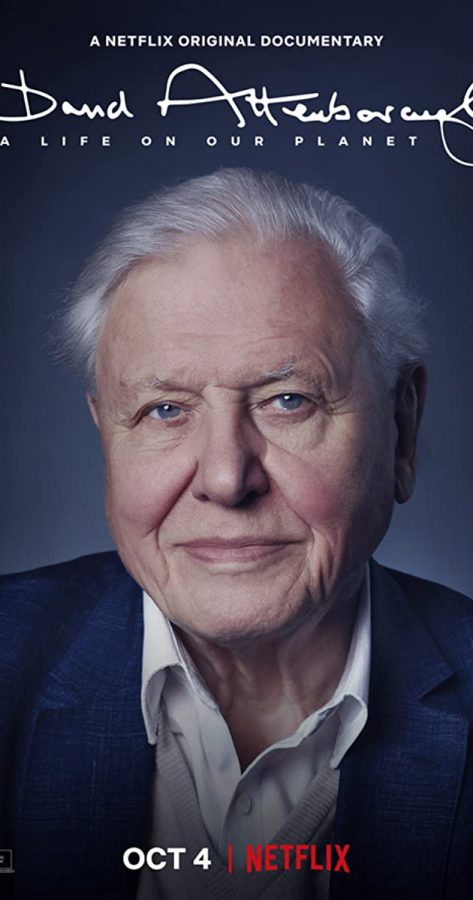Tragic and hopeful, “A Life On Our Planet” educates viewers
David Attenborough’s A Life On Our Planet is a moving, first-hand account of humans’ impact on wildlife and the world today.
David Attenborough’s A Life On Our Planet debuted on Netflix on October 4. Produced by Silverback Films and WWF Productions, the documentary originally came out on April 16 of this year before appearing on Netflix. This film has earned its current approval rating of 94% on Rotten Tomatoes.
Attenborough is an English broadcaster, naturalist, writer, and historian who is most famous for his work with the BBC Natural History Unit and National Geographic. Attenborough has educated millions of people across the world with his commentary and has been called “the greatest broadcaster of our time.” Over the past 93 years, he has documented and stepped foot on every continent and has been able to witness how human life has affected the rest of life on earth. In A Life On Our Planet, Attenborough tells viewers about the tragic loss of life on Earth while guiding them into a hopeful future.
The film starts off with Attenborough walking around an abandoned Ukrainian city. The city was once home to 50,000 Ukranian people, but once a bomb went off, the whole town was evacuated and left to rot. Attenborough goes on to say how this was just a single event, and how the true disaster is how humans are slowly destroying the world day by day through the loss of wildlife and biodiversity. Attenborough is worried the Ukranian city is just an example of what the globe will look like if humans are not careful, but he says that it may not be too late. Attenborough stated in the documentary, “This film is my witness statement and my vision for the future, the story of how we came to make this our greatest mistake, and how, if we act now, we can yet put it right.”
Attenborough’s exemplary knowledge is shown throughout the film, and he nails his key point: We need to start taking better care of our environment, or we may no longer be able to live on earth. It is touching how much Attenborugh cares for our earth and its future, even if he does not have that much time left.
Throughout the narration, Attenborough repeatedly uses the word “unsustainable” to refer to the costly habits humans have been using every day. Attenborough is right, everything humans do on a daily basis affects the future. Anything from littering to destroying ecosystems to drilling for oil is costly, and it slowly chips away at the Earth. For example, he talks about how humans continue to shred down our rainforests. He says this is an unsustainable custom because we will eventually run out of rain forest to tear down. As Attenborough says in the film, “The damage will accumulate ultimately to a point where the whole system will collapse.”
Through excellent narration, a great timeline, and eye-catching visuals, Attenborough does an astonishing job of showing how the earth has changed across his lifetime for the worse. He shows graphs of how as the population of humans increases, the more our planet is polluted. Attenborough captures how beautiful the earth truly is while maintaining a haunting theme throughout the film as he shows what will become of it if we’re not careful The crew shows models of how life will be in the future through examples and visuals, and it is shocking. Beautiful wildlife is showcased throughout the documentary, and Attenboroughs shows an example of futuristic machines destroying fields quite easily. Jungles, forests, and mountains are all captured, but he also puts in saddening pictures of wastelands that used to be flooding with wildlife.
Although watching the documentary can feel like grieving, the production does a marvelous job of giving the audience a glimpse of hope at the end when that same rusted Ukranian is shown again with luscious wildlife and green growing around it.
I 100% recommend watching this for the superb work of David Attenborough, the visuals, and to be informed of what is becoming of the world.




































![Teacher Lore: Mr. Hillman [Podcast]](https://bsmknighterrant.org/wp-content/uploads/2025/03/teacherlorelogo-1200x685.png)





